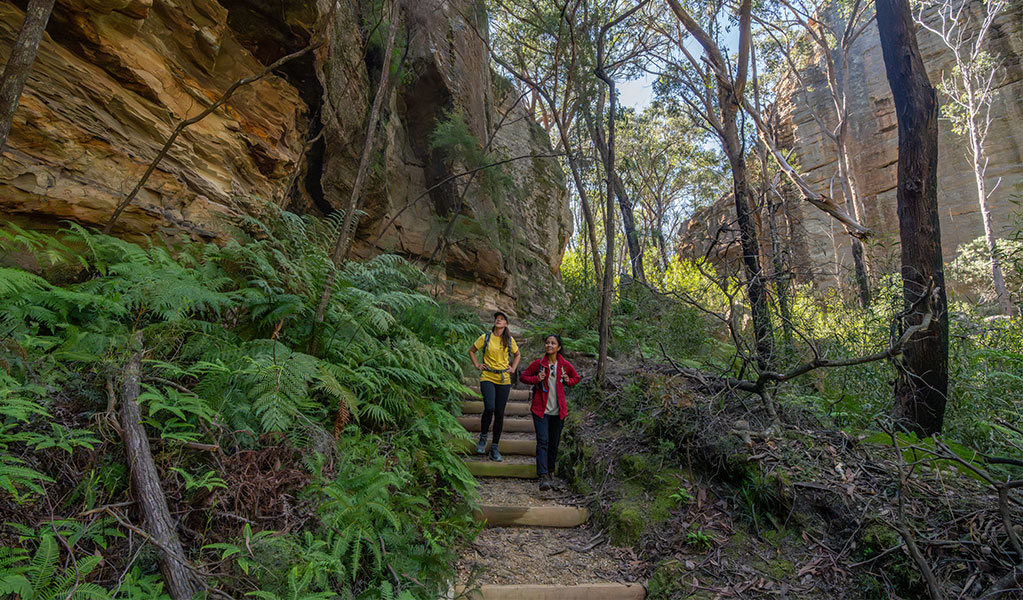Glow Worm Tunnel via Wolgan Valley loop
Wollemi National Park
Overview
Set aside a day to hike 9km through Wollemi National Park on Glow Worm Tunnel via Wolgan Valley loop. Marvel at the historic railway tunnel, a lush rainforest gorge, and rocky pagoda outcrops, on this special walk between Newnes and Lithgow.
- Accessibility
- No wheelchair access
- Distance
- 9km loop
- Time suggested
- 4 - 5hrs
- Grade
- Grade 4
- Trip Intention Form
-
It's a good idea to let someone know where you're going. Fill in a trip intention form to send important details about your trip to your emergency contact.
- What to
bring - Torch, drinking water, sturdy shoes, suitable clothing, first aid kit, personal locator beacon, hat, sunscreen, raincoat, snacks
- Please note
- Glow Worm Tunnel is home to thousands of glow worms. Help protect them by staying on the path.
- Please take care in the tunnel as it’s completely dark and the ground can be slippery.
- When you turn off your torch, take the time for your eyes to adjust to the darkness before you see the glow worms.
- Try to keep noise to a minimum as glow worms are sensitive to sound.
- Shine your torch on the ground or use one with a red-light option as red-light is the least disruptive for glow worms.
- There is no mobile reception in the Glow Worm Tunnel area. It's a good idea to let someone know where you're going.
- The Glow Worm Tunnel to Newnes section of the track may be closed during or after heavy rain because of rock fall and flood risk. Please check alerts for track closures before you leave home.
Glow Worm Tunnel via Wolgan Valley loop is a walk you'll want to write home about after spending 4-5 hours in Wollemi National Park's world-heritage scenery.
The diverse and dramatic features on this walk include a historic railway tunnel with glow worms, the lush rainforest in Penrose Gorge, alien rock formations known as pagodas, and spectacular cliffs offering views out over Wolgan Valley.
Start from the Glow Worm Tunnel carpark and walk 1.5km to reach the loop. Turn right at the fork to walk the circuit anti-clockwise to minimise uphill sections. This also leaves the tunnel to the end of the walk and will allow you to spend as much time as you like seeing the glow worms. The first half of the loop along Pagoda track takes you through forests of twisted angophoras, waratahs, golden wattle, and banksias. You may even spot lyrebirds, goannas, gang-gang cockatoos and brush-tailed rock wallabies. You'll also see ‘platy’ pagoda rock formations. These are unique to the area because of their rough, sometimes striped surface, while most pagodas are smooth.
After about 3.2km, you'll reach a 4-way intersection. Take the first left to stay on the loop heading towards Glow Worm Tunnel following the old railway passage with heritage stone wall and railway sleeper remnants. After about 8km of peeking through trees the full view of the valley opens up at a lookout over Donkey Mountain, Wolgan Valley and Penrose Gorge.
Continue along Tunnel Creek surrounded by rainforest and narrow gorges before you reach Glow Worm Tunnel. Built in the early 1900s as part of the old Wolgan Valley railway track connecting Lithgow to Newnes, the tunnel is home to thousands of glow worms that cling to the dark, damp walls. At 387m long, it's dark enough for you to see glow worms during the day. Upgrades to the walking track to even out the surface and install a handrail make navigating in the dark easier. Switch off your torch, stay quiet, and wait for the tunnel to gently light up.
Also see
-

Life and light in Glow Worm Tunnel - Tash has been testing
Glow Worm Tunnel is a habitat for glow worms and an enchanting walk for visitors. Watch our videos to learn how an old railway tunnel from the days of oil shale mining has taken on a new life.
-

Glow Worm Tunnel walking track
Glow Worm Tunnel walking track is the fastest and easiest way to experience the wonder of this historic tunnel, lit by thousands of glow worms. It’s a favourite with visitors to Wollemi National Park, near Lithgow.
Map

Map
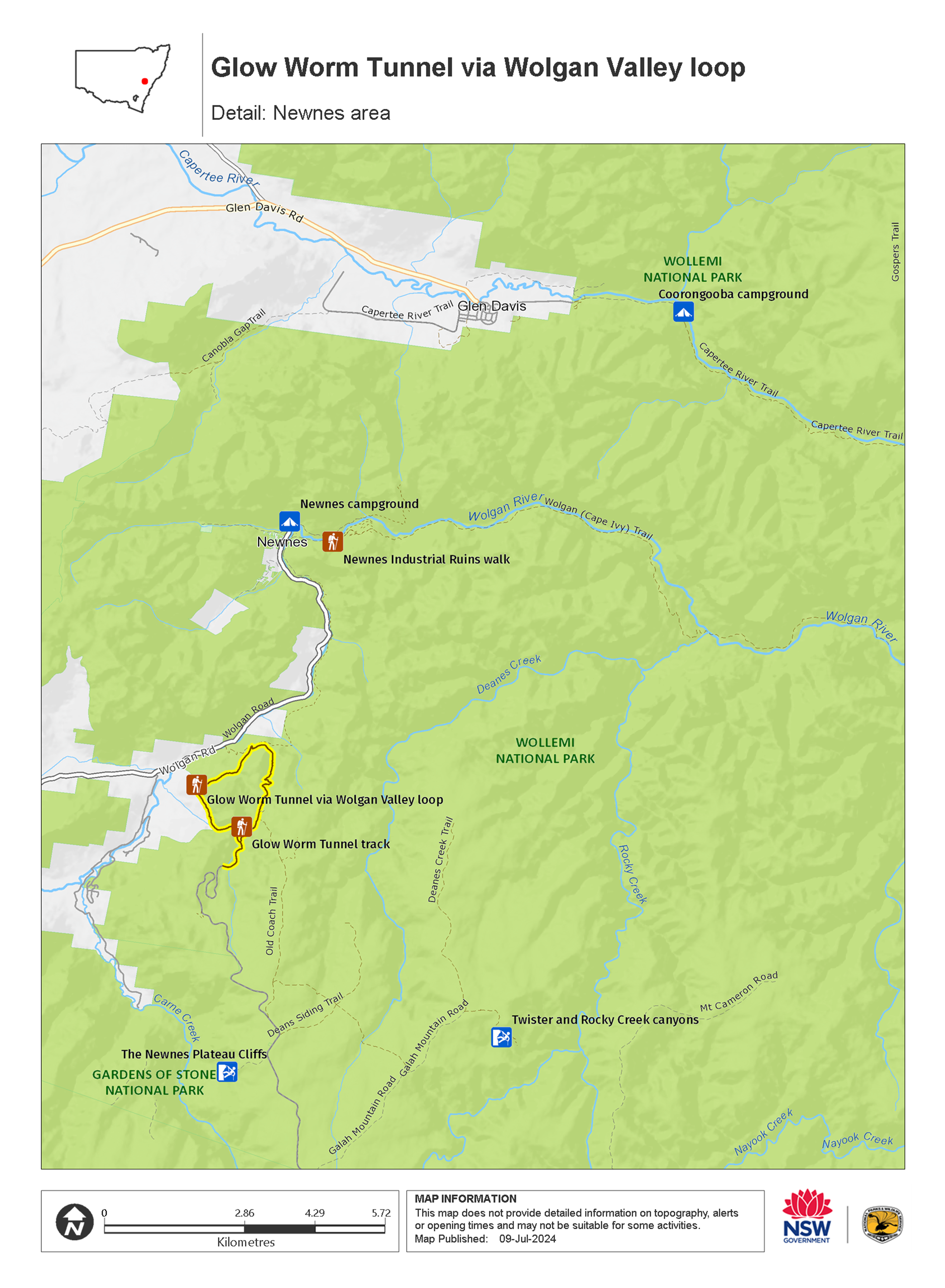
Map legend

Local alerts
For the latest updates on fires, closures and other alerts in this area, see https://uat.nswparks.cloud/things-to-do/walking-tracks/glow-worm-tunnel-via-wolgan-valley-loop/local-alerts
General enquiries
- National Parks Contact Centre
- 7am to 7pm daily
- 1300 072 757 (13000 PARKS) for the cost of a local call within Australia excluding mobiles
- parks.info@environment.nsw.gov.au
Park info
- in Wollemi National Park in the Sydney and surrounds, North Coast and Country NSW regions
Wollemi National Park is always open but may have to close at times due to poor weather or fire danger.
Visitor info
All the practical information you need to know about Glow Worm Tunnel via Wolgan Valley loop .
Maps and downloads
Learn more
Glow Worm Tunnel via Wolgan Valley loop is in Wollemi National Park. Here are just some of the reasons why this park is special:
Ancient connections
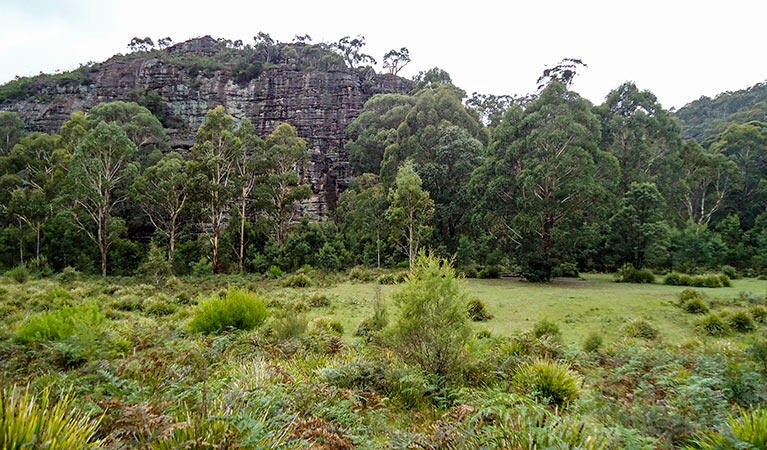
The area that is now Wollemi National Park has held significance to Aboriginal people for at least 12,000 years. Evidence of this connection can be seen throughout the park, including ceremonial grounds, stone arrangements, grinding grooves, scarred trees and rock engravings. There are around 120 known Aboriginal sites in the park and probably many more yet to be discovered. The Wiradjuri, Dharug, Wanaruah and Darkinjung people have a strong and ongoing cultural association with their traditional lands and waters.
- Guided kayak tours of Ganguddy-Dunns Swamp Experience the natural beauty of escarpments, gorges and wildlife on a guided paddling tour of Gunguddy-Dunns Swamp with Southern Cross Kayaking.
- Pagoda Lookout walking track Pagoda Lookout walking track is a short but steep walk near Rylstone in Wollemi National Park. Enjoy incredible views over ancient pagoda rock formations and the Cudgegong River.
Geological marvels
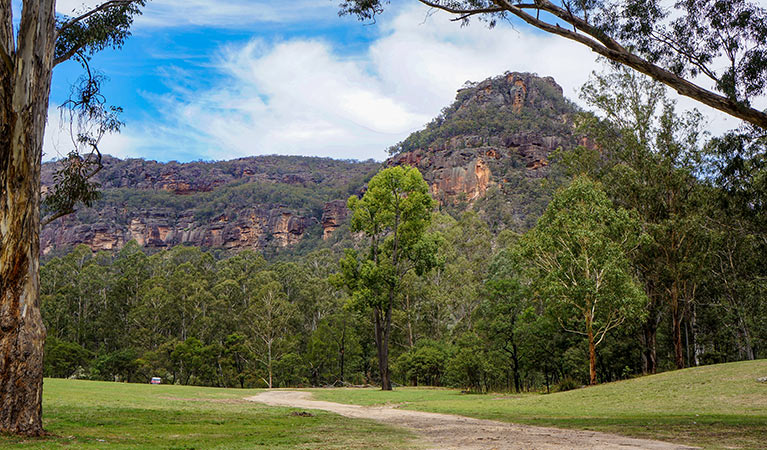
Wollemi's landscape has been sculpted over millennia into a magnificent network of soaring sandstone escarpments, plunging gorges and canyons, winding river valleys and awe-inspiring geological and geomorphological features such as pagoda rock formations, basalt-capped mountains and diatremes. The spectacular Colo gorge and its tributaries form the most extensive sandstone canyon system in eastern Australia. Grab your camera and discover for yourself the breathtaking vistas and natural marvels that make this a World Heritage treasure.
- Explore Wollemi's wonders guided tour Experience the highlights of Wollemi National Park on this guided tour with Hikeandseek NSW. Traverse canyons, tunnels and valleys while learning about the area’s history.
- Guided kayak tours of Ganguddy-Dunns Swamp Experience the natural beauty of escarpments, gorges and wildlife on a guided paddling tour of Gunguddy-Dunns Swamp with Southern Cross Kayaking.
- Pagoda Lookout walking track Pagoda Lookout walking track is a short but steep walk near Rylstone in Wollemi National Park. Enjoy incredible views over ancient pagoda rock formations and the Cudgegong River.
- Wollemi camping and canyoning expeditions Join Roam Adventures and Training on a camping and canyoning adventure in the stunning Wollemi National Park.
Nature's haven
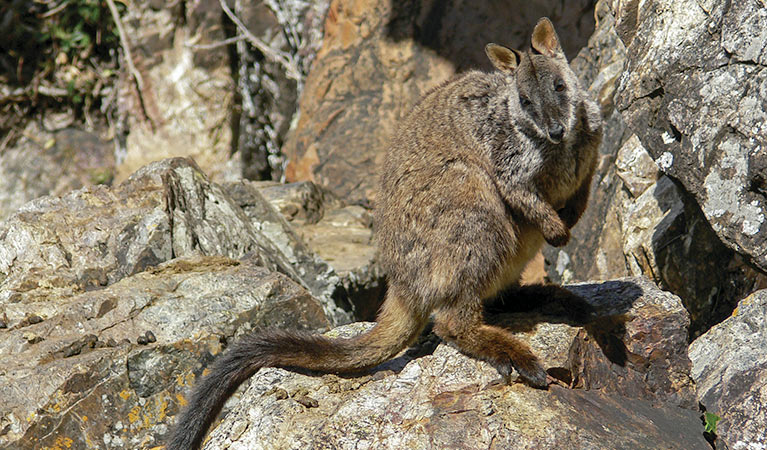
It's little surprise that Wollemi's spectacular landscape shelters a rich diversity of plants and animals. The rare Wollemi pine - a 'living fossil' whose closest relatives thrived some 90 million years ago was rediscovered here in 1994, and the park protects an incredible array of botanical species and communities, from open eucalypt forest and woodlands including Hawkesbury and grey box, to rainforests and perched swamps. This variety makes it an appealing habitat for eastern grey kangaroos, red-necked wallabies and the elusive brush-tailed rock wallaby, as well as the beautifully marked broad-headed snake, regent honeyeater and glossy black cockatoo. Around 55 species of butterfly have also been recorded.
- Glow Worm Tunnel via Wolgan Valley loop Set aside a day to hike 9km through Wollemi National Park on Glow Worm Tunnel via Wolgan Valley loop. Marvel at the historic railway tunnel, a lush rainforest gorge, and rocky pagoda outcrops, on this special walk between Newnes and Lithgow.
- Wollemi guided Glow Worm Tunnel walk Join Wolgan Valley Eco Tours on the popular Glow Worm Tunnel walking track in Wollemi National Park and see the magical natural light show created by thousands of glow worms.
Outdoor adventure
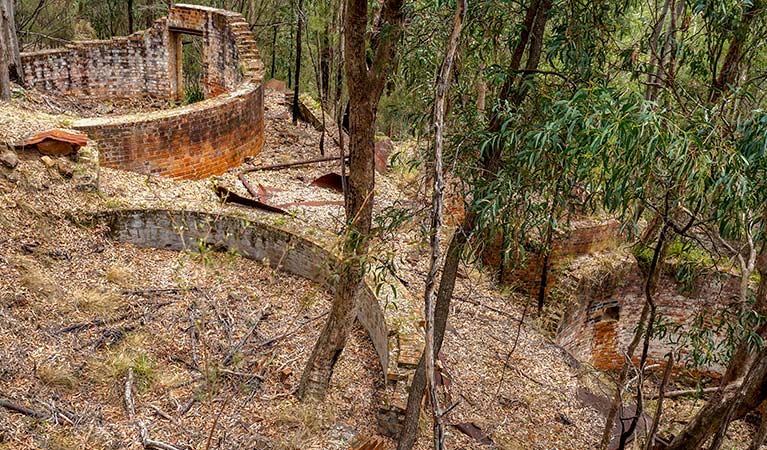
Pitch a tent at one of Wollemi's great campgrounds, like the secluded Colo Meroo backpack campground, the car-accessible Coorongooba campground or the dramatically-situated, car-accessible Newnes campground. With your base set up, you're free to get out and enjoy the park's fantastic outdoor attractions, be they more relaxed pursuits such as picnicking, canoeing and swimming or something more adventurous like rock climbing, horseriding and hiking.
Plants and animals protected in this park
Animals
-

Superb lyrebird (Menura novaehollandiae)
With a complex mimicking call and an elaborate courtship dance to match, the superb lyrebird is one of the most spectacular Australian animals. A bird watching must-see, the superb lyrebird can be found in rainforests and wet woodlands across eastern NSW and Victoria.
-

Bare-nosed wombat (Vombatus ursinus)
A large, squat marsupial, the Australian bare-nosed wombat is a burrowing mammal found in coastal forests and mountain ranges across NSW and Victoria. The only other remaining species of wombat in NSW, the endangered southern hairy-nosed wombat, was considered extinct until relatively recently.
-

Southern boobook (Ninox novaeseelandiae)
The southern boobook, also known as the mopoke, is the smallest and most common native owl in Australia. With a musical 'boo-book' call that echoes through forests and woodlands, the southern boobook is a great one to look out for while bird watching.
-

Satin bowerbird (Ptilonorhynchus violaceus)
With vibrant blue-violet eyes and curious antics, the satin bowerbird is a favourite for bird watching and easy to spot as it forages for food in open forest. Relatively common across eastern Australia, in NSW they’re found in coastal rainforests and adjacent woodlands and mountain ranges.
-

Spotted-tailed quoll (Dasyurus maculatus)
The spotted-tailed quoll is the largest remaining carnivorous marsupial on the Australian mainland. It’s protected as a vulnerable species in NSW.
Plants
-

Smooth-barked apple (Angophora costata)
Smooth-barked apple gums, also known as Sydney red gum or rusty gum trees, are Australian native plants found along the NSW coast, and in the Sydney basin and parts of Queensland. Growing to heights of 15-30m, the russet-coloured angophoras shed their bark in spring to reveal spectacular new salmon-coloured bark.
-

Wollemi pine (Wollemia nobilis)
The Wollemi pine is one of the world’s oldest and rarest trees. Only 46 adult trees and 43 juveniles remain in the wild. Belonging to a 200 million year-old plant family, this critically endangered Australian species is considered a global treasure.
Environments in this park
Education resources (1)
General enquiries
- National Parks Contact Centre
- 7am to 7pm daily
- 1300 072 757 (13000 PARKS) for the cost of a local call within Australia excluding mobiles
- parks.info@environment.nsw.gov.au
Operated by
- Blue Mountains Heritage Centre and Blackheath office
- 9am to 4.30pm daily. Closed Christmas Day.
- 02 4787 8877
- bluemountains.heritagecentre@environment.nsw.gov.au
- 270 Govetts Leap Road, Blackheath NSW 2785
Park info
- in Wollemi National Park in the Sydney and surrounds, North Coast and Country NSW regions
Wollemi National Park is always open but may have to close at times due to poor weather or fire danger.

